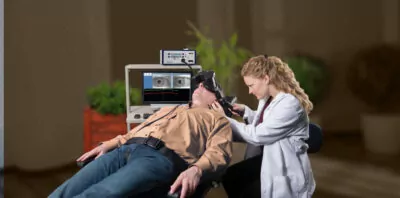
The study titled “Clinical Pathways in Vestibular Care: Referral Trends Between Vestibular Rehabilitation and Objective Vestibular Testing” included a medical chart review of patients who completed both vestibular rehabilitation (VR) —a specialized type of physical therapy— and objective vestibular testing (vestibular test battery; VTB) – testing completed by an audiologist. The study included 149 adult patients who were seen in a large medical facility in the Midwest and had symptoms of dizziness, vertigo, or balance issues. The participants were divided into two different groups based on their care pathway:
- VR ‑first group: patients who started with physical therapy or VR.
- VTB ‑first: patients who started with objective testing, or a VTB.
The goal of this study was to understand how patients move between VR and VTB and if (and how) early VTB changed treatment outcomes. This study was a second phase of corresponding research: “Survey of Physical Therapists’ Views on Referral Processes for Objective Vestibular Testing,” which aimed to understand physical therapists’ viewpoints regarding objective vestibular testing and what possible indications may warrant a referral for a VTB.
Key findings
- Aside from patients diagnosed with Benign Paroxysmal Positional Vertigo (BPPV), patients participated in fewer VR treatment sessions when completing the VTB first.
- The study also found that less than half of patients with certain vestibular disorders who were referred to a VTB after VR will return to VR with a modified treatment plan.
- For patients whose physical therapy diagnosis didn’t match the diagnosis from the VTB, physical therapists still used the VTB results to guide their treatment in about 80–89% of cases. This means the VTB results often influenced the care these patients received.
Complementary survey of physical therapists’ viewpoints of vestibular testing
The related survey of 109 vestibular physical therapists found:
- 87% were familiar with formal vestibular testing, and 68% felt comfortable interpreting the results.
- 66% used test results to guide therapy, and 59% used them when VR wasn’t working.
- Despite this awareness, only 21% said their therapy plan changed after testing.
- The main triggers for referring patients for objective vestibular testing included:
- no improvement after a few VR sessions
- unclear or inconsistent findings during therapy
- suspected central causes (like neurological conditions)
- history of medications toxic to the vestibular system
Why this matters
- Completing VTB early in the patient’s journey may help accurately identify unilateral, bilateral, or central vestibular problems, which can assist physical therapists in designing more targeted rehabilitation plans. More research is needed, which should include other institutions and patient populations.
- While physical therapists often incorporate the findings from the vestibular testing, nearly half of the patients do not return to VR after completing the VTB. This can help providers when they are making recommendations and referrals.
- Clear collaboration between audiologists (or vestibular testing providers) and vestibular physical therapists can prevent delays in accurate diagnosis and personalize treatment earlier.
- Both studies highlight the need for guidelines on when to refer VR patients for vestibular testing, signaling a need for structured referral pathways.
Source(s)
Behr, E., Massa, M.L., & Honaker, J.A. (2025). Clinical Pathways in Vestibular Care: Referral Trends Between Vestibular Rehabilitation and Objective Vestibular Testing. American Journal of Audiology. 1-8. 10.1044/2025_AJA-25-00037.
